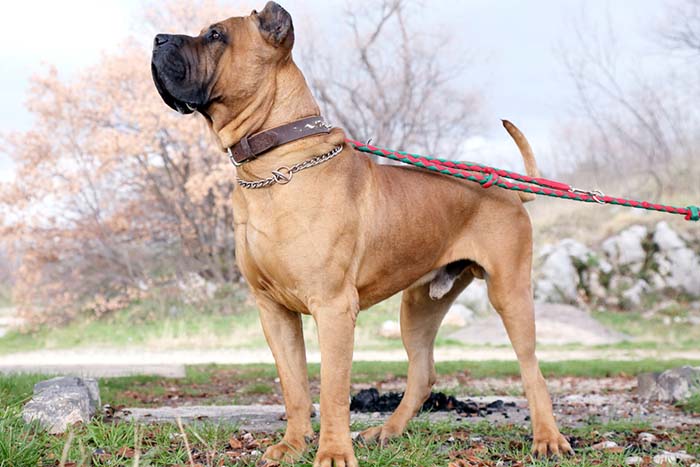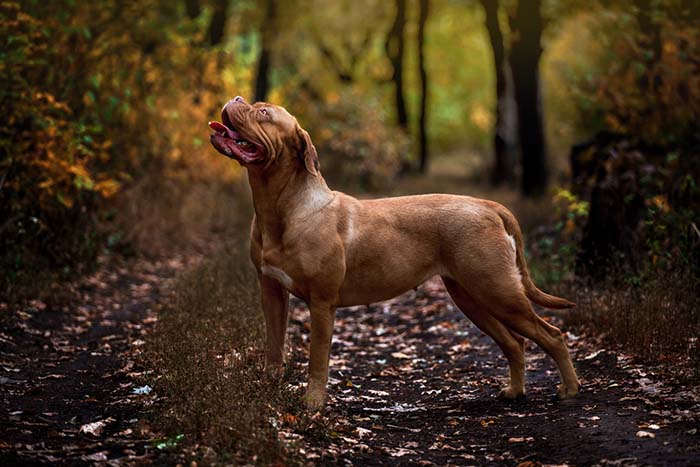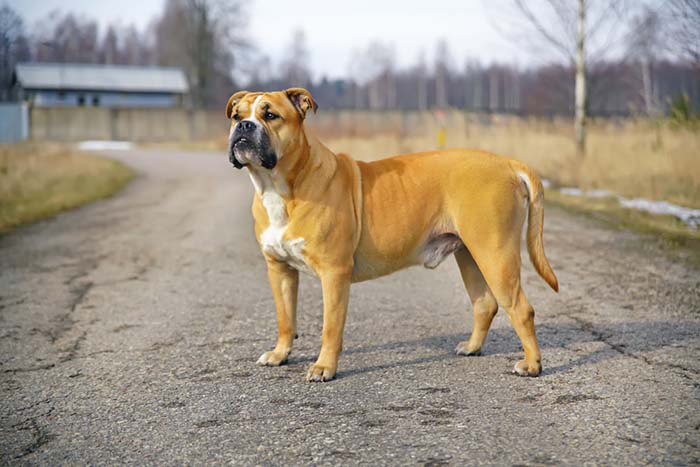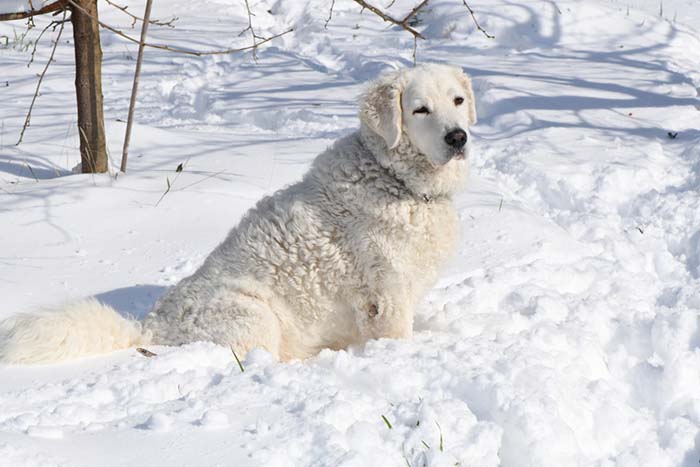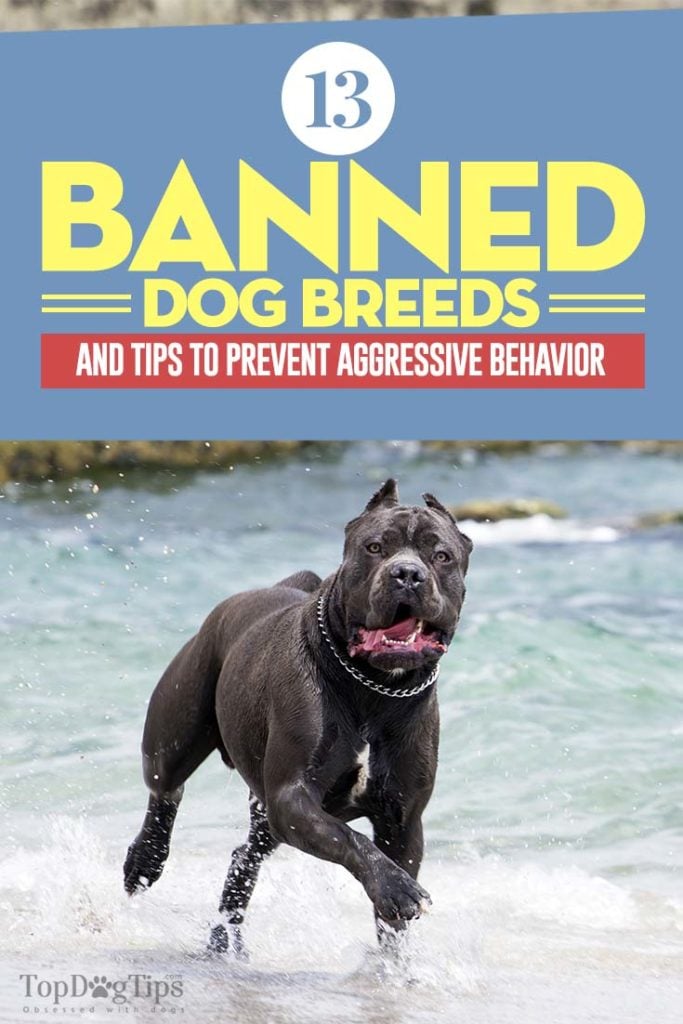13 Banned Dog Breeds That Are Most Often Discriminated Against (2020)
Some countries and U.S. states pass breed discrimination laws now, banning owners from adopting certain dog breeds. The way these laws work can be complicated: usually, they vary from county to county, or city to city. While one county or township will ban four breeds, the next one over may only ban one. Below are the most commonly banned dog breeds across the United States.
Banned breeds aren’t “unadoptable,” but before you get a dog with the reputation of being aggressive or a “guard” dog, it is best to check your local laws so you don’t have to relinquish them shortly thereafter. Note that even if the breed isn’t banned by the state, it can be banned by landlords, home owners associations and home insurance companies.
13 Frequently Banned Dog Breeds
1. Doberman Pinscher
Pictured above, this breed is beautiful a sleek. They grow to a large size, but are still incredibly graceful. This brave, loyal dog is very affectionate with his family. He makes a great watch dog. Energetic and playful, these dogs need to be exercised regularly to keep from being aggressive or destructive. While the breed is banned in some places, when trained and socialized properly, these pups can be just as friendly as any other breed.
2. German Shepherd
Intelligent “work” dogs, German Shepherds are used as police dogs, guide dogs, and farm hand dogs. They are aloof with strangers and not easily distracted. These dogs are energetic and love play time, but they are calm and restrained as well. German Shepherds shed a lot, it may be best if you don’t have carpet in your home. That said, they are also quite high on aggression statistics charts, and thus some places have banned adopting German Shepherd Dogs.
3. Dogo Canario
A member of the mastiff family, the Dogo Canario is not known to be friendly with kids, cats, dogs or strangers. That is why he makes the list of banned dog breeds. These dogs are energetic and alert, meaning they need regular exercise. Also called the Perro de Presa Canario, pups in this breed are said to be friendly if raised with kids and other animals. They would need proper socialization and training to be any more than a guard dog.
4. Chow Chow
These regal dogs always remind me of a lion. With a body of fluffy hair, they do not do well in hot weather. The Chow Chow doesn’t have a lot of energy, so it needs little exercise. These dogs are independent and self-willed making them harder to train. Pooches from this breed are known to be pretty aggressive and don’t always do well with the people and animals around them.
5. Mastiff Breeds
There are many types of Mastiffs, including the Japanese (Tosu Inu), Bull, Brazilian, Neapolitan, Tibetan and Argentino. These dogs are considered to be “gentle giants” by those who own them. Mastiffs are affectionate and do great in families that have kids. They do make excellent guard and watch dogs, but only if trained to be. All Mastiffs are independent and strong-willed. They need a dedicated trainer who is willing to put in the time to be “pack leader”.
6. Cane Corso
Dogs in this breed have short hair with minimal shedding making them easy to maintain. They are also a hardy and healthy lot. The Cane Corso is intelligent and eager to please, so they are easy to train. Most of these pooches are quiet and calm, but they’re still one of the most commonly banned dog breeds. Another from the Mastiff breed, this dog usually doesn’t like other dogs and cats. They do better in a home with older, calmer children.
7. Dogue de Bordeaux
The Dogue de Bordeaux is a drooling giant that most people would not consider “beautiful”. They are affectionate with members of their family, but don’t always get along with other kids that come over. These loyal dogs make great watch dogs, but would need to be the only animal in your family. They don’t need a lot of exercise and are somewhat lazy.
8. Bully Breeds
Whether you’re talking about the American Pit Bull Terrier, American Bully or the Staffordshire Bull Terrier, these breeds are often on the lists of most commonly banned dog breeds. Surprisingly, these dogs have a great reputation for being great with children. In fact, dogs in the Bull breeds are often called “nanny dogs” for their constant companionship and guarding of the family’s children. Although, you can’t train these dogs to be aggressive guard dogs and then expect them to be okay with kids and animals.
9. Ca de Bou
With “Mastiff” ancestry, this dog is also known as a “Bulldog” based on the fact that it was originally used as a bull baiting dog. The Ca de Bou is also known as the Perro do Preser Mallorquin. This pup shares the same traits as most “Mastiffs” and “Bulldogs”. They are a rare breed, so care must be taken to ensure you get a dog from a reputable breeder. Inbreeding can cause aggression and other unwanted traits.
10. Bandog
Another rare dog that is one of the most commonly banned dog breeds, this is a breed of varied ancestry. They were originally created by breeding “Mastiff” breeds with “Bull Dog” breeds. Their looks can be varied as well. Some looking more like the “Mastiffs” and some looking more like “Bull Dogs”. The Bandog, like many other dogs on this list, was used to fight bulls, bears, and other dogs. They are known to be fearless and brave.
11. Kuvasz
This breed can be aggressive and fearful. They are not recommended for families with kids or other pets; however, they are still affectionate with their owners. Kuvasz are not known to be playful and energetic. They prefer a quiet, laid-back family. These stubborn, strong-willed dogs need a strong, take charge owner. Protective and territorial, these pooches make great guard dogs for livestock.
12. Rottweiler
These dogs are calm and brave. They can get up to 130 pounds – possibly more! Dogs in this breed are not hyper and needy. Rottweilers are recommended for experienced owners because of their size. Training needs to start as soon as possible while they are still small enough to be easily handled. While they are known to be friendly with kids in the household, they need to be the only canine kid in the house.
13. Akita Inu
These dogs prefer to be the dominant dog. You will need to practice “pack-leader” training if you own one of these dogs. They do not like other animals, so no trips to the dog park for these canines. Akita breed dogs are active and need exercise, so it is best to have a larger yard with a higher fence. This pup is known to be aggressive around the food bowl, which is just one of the reasons it is one of the most commonly banned dog breeds.
Training and Caring for Banned Breed Dogs
Lets talk about preventing aggression in dogs. As I mentioned, if your dog shows any signs of aggression or is a breed that is known for being aggressive, it’s crucial that you work with a trained professional; it’s generally unsafe for you to do this yourself.
You may have experience with dogs, but when it comes to an aggressive one, you should not be taking any chances. Working with a dog like this on your own could lead to a major problem. Seek the help of a professional dog trainer that specializes in working with your particular breed or aggressive breeds in general. Below is what’s generally used for such dogs in fixing their behavior.
Socialization Training
This training starts from birth, so make sure you get your puppy from a reputable breeder. The important thing to remember is to go slow and stay positive. Only move up in difficulty when your pet does well with the lower rungs of the ladder.
When you do these exercises, stay in a good mood and carry lots of treats for your fur-baby. Be prepared to offer lots of love and praise. Don’t forget, this is an ongoing process for at least a year, so your pooch won’t take back steps. Even if you get your dog later in its life, these same steps will apply:
- Introduce your pooch to new people
- Introduce your pup to other animals
- Take your dog for walks around the neighborhood
- Make sure your canine is brought to different areas of town to see new sights, new people, and new animals
Obedience Training
This type of training also starts as soon as your new dog comes home. The key is to be consistent. If you are not going to want your pet jumping on you, then you must never allow it to jump on you.
Don’t send mixed signals by petting it when it jumps today and fussing when it jumps on you tomorrow. More importantly, don’t let your dog jump on you if you don’t want it to jump on your guests and people on the street.
How your dog treats you is how it will treat others. Here is a quick look at the three most popular forms of dog training:
Reward Based Training involves giving praise and treats for every good behavior and ignoring your dog completely during bad behavior. Your pet runs to greet you at the door calmly and waits to be acknowledged – this gets a treat and praise. Your dog runs to greet you and is jumping on you, and getting under your feet – this gets ignored – don’t make eye contact and keep walking right past.
Punishment Based Training is when you yell or spank your dog when he does something bad. Your pooch had a potty accident so you yell, shove their nose in it, and roughly toss them outside. This is the way lots of people train, but it isn’t effective. If fact, this method of training just creates a fearful animal, and fearful animals bite.
Permission Based Training has owner awareness at its core. The dog does not leave or enter the room, move forward while on the leash, get out of the car, potty, and many other things without looking to the owner for permission to do so. This type of training is very effective at keeping canine family members calm and controlled.
Pack Leader Training
Recommended for ALL banned dog breeds on this list, you will need to check out pack leader training if you plan on owning one of the most commonly banned dog breeds. This type of training is where you are the leader.
Your dog won’t be territorial and aggressive because it is your territory, your food, your food bowls, your pack, etc. They can only use it when they are in a calm and submissive state. This type of dog training would be used in conjunction with dog obedience and socialization training.
When completing pack leader training, there are 7 steps you’ll need to complete:
1. Make your dog work for his food. Take him for a walk before meal time. Never feed your dog until he is calm and docile. Make him sit and wait. When the time is right, put the food down.
2. Never let your dog jump on you. You are the Alpha! Make your dog, from puppyhood, treat you with respect. If you don’t want them doing it in adulthood, or to other people, they can’t do it to you as a puppy either.
3. Always look your dog in the eye. It is what canines do. If you want to be in the position of authority, look them in the eye and make them look away first.
4. Your personal space is the Alpha space. With Pack Leader Training, the dog cannot be allowed in your bed or on the furniture. That is your space.
5. No rough play. You are the leader, not to be toyed with. This doesn’t mean that you can’t play with your fur-baby. It means have organized, respectful play.
6. If you want respect, give it. Just because you are the Alpha, doesn’t mean you disrespect your animal. Don’t shove its nose in poop, don’t beat it, and don’t holler and yell. Always display the calm, strong, level-headed behavior you want your dog to show.
7. Most importantly, be consistent. If your pooch has to lie down and calmly wait for food today, then they have to do it every day. Inconsistency and lax rules will not place you in a position of authority.
Human (Your) Behavioral Modification
This may sound crazy. You want the dog to modify his behavior for your needs, not the other way around. It doesn’t always work that way. Dogs have thousands of years of breeding in them to be a certain way.
The canines on this list of banned dog breeds have generations and generations of breeding to make them fighting dogs – brave, aggressive, territorial, aloof, and tenacious. There are some things that you can do to avoid triggering your dog’s aggression.
- To avoid dog bites and attacks, no one should approach or try to pet your dog while it is eating.
- Kids need to be taught not to look dogs straight in the eye. To dogs, this is a challenge.
- Just because a tail is wagging, doesn’t mean the dog is happy. Tail wagging is used when a dog is excited, which could be a good or a bad excited mood.
- Don’t approach chained animals. The dog may feel it is in a compromising situation and needs to protect itself.
- Make sure dogs hear that you are approaching if they are sleeping. Walk hard, start talking – anything so that you don’t scare them when you are up close. Scared animals sometimes attack.
As mentioned above, some cities or counties may ban certain dog breeds that they deem to be aggressive in nature. Even if your city or county has no breed-specific legislation, your apartment building, home owners association or insurance company may have a list of banned dog breeds that you’ll need to be aware of.
Even though a few dog breeds may be statistically more dangerous due to prevalence of bites from that breed, many of these banned dogs are simply stereotyped and labeled as dangerous with little to no evidence to back up those dangers.
READ NEXT: The Science Behind Aggression In Dogs




